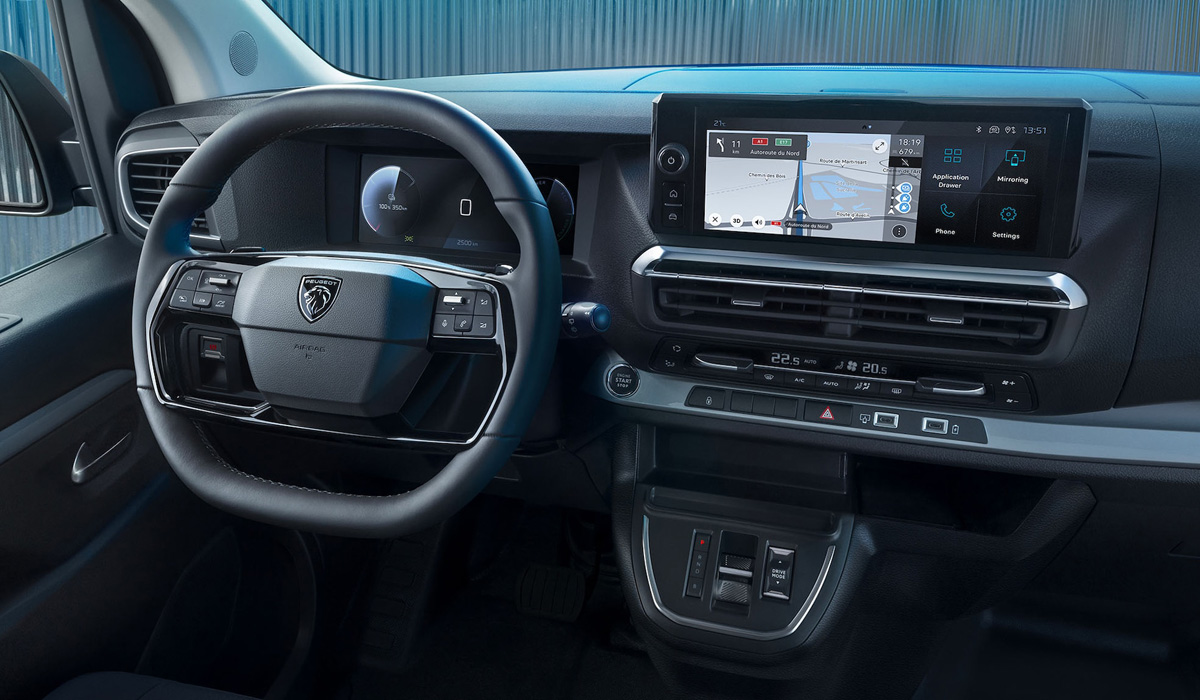
Simultaneously with the compact “heels”, the Stellantis concern has upgraded a larger family of vans and minibuses. It has been produced since 2016 and also includes models under different brands (Peugeot, Citroen, Fiat, Opel, Vauxhall, Toyota), but this time it was decided to show the updated cars not all together, but gradually. Peugeot vans were the first to be declassified.

Recall that the passenger Peugeot Traveller has been sold in most European countries since last year only in the electric version, although the “cargo” Peugeot Expert has retained the turbo diesel in the range. However, the priority of the battery version has led to the fact that all changes in appearance are aimed at improving aerodynamics, which is especially important for an electric car. The front part of the Traveller/Expert models has been significantly redesigned and now corresponds to the current design language of the Peugeot brand and is decorated with an updated corporate logo. There are new headlights with characteristic LED “claws” and an upgraded bumper. The sidewalls and the rear part have not undergone significant changes.

The interior of the vans was also altered. Virtual devices (10 inches) appeared, the central part of the front panel was redesigned, and instead of the transmission control washer, a miniature e-Toggle joystick is now located on the console tide. The central touch screen has been enlarged in size, and places for storing small items have been added. And all this is relevant for both passenger and cargo versions.

The Peugeot Traveller minibus has new options for finishing the seats with fabric or perforated leather, depending on the configuration. The new colors of the decorative panels complement the advanced personalization features. The media system has support for Apple CarPlay and Android Auto protocols, as well as an over-the-air update, there is wireless charging for a smartphone and additional USB-C connectors and 12-volt sockets. The list of electronic driver assistants has been expanded with driver fatigue warning systems, road sign recognition, lane control, automatic emergency braking (with pedestrian and cyclist detection) and adaptive cruise control.

Peugeot Traveller and Expert are offered in two lengths — 4.98 or 5.33 m. The height is 1.90 m, which allows entry to covered parking. Traveller can accommodate up to nine passengers or 4.9 cubic meters of cargo, and the Expert van can have a cargo compartment of up to 6.1 cubic meters.

The technique is the same. Electric cars have a non-alternative engine with a capacity of 136 hp on the front axle. The torque reaches 260 Nm. The maximum speed is limited at 130 km/h. You can choose from two variants of traction batteries. The basic one has a capacity of 50 kWh and allows you to drive up to 224 km on a single charge on the WLTP cycle, and the optional 75 kWh battery should be enough for 350 km (before it was 330 km). In both cases, AC (11 kW) and DC (100 kW) chargers are installed. Peugeot Expert can have a 2.0 BlueHDi turbodiesel in 120, 145 or 180 hp versions. Gearboxes — six-speed “mechanics” or eight-speed “automatic” (optional for cars with a 145-horsepower engine and standard equipment for 180-horsepower vans).
The updated Citroen Jumpy has already been shown, and he got all the same improvements, except that the design of the front part is different. However, the restyled passenger Citroen SpaceTourer has not yet been presented. In Europe, sales of updated vans under the Peugeot and Citroen brands should begin before the end of this year.